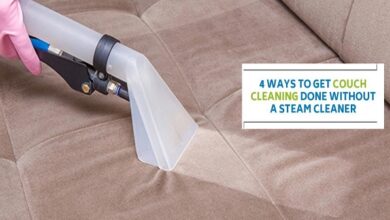Steam Cleaning Carpets vs. Shampooing Carpets: Comparing Effectiveness and Benefits
Steam Cleaning Carpets

Maintaining clean and fresh carpets is essential for a healthy and aesthetically pleasing living environment. When it comes to deep cleaning carpets, two popular methods are steam cleaning and shampooing. While both methods aim to remove dirt, stains, and odors from carpets, they differ in their approach and effectiveness. In this article, we will explore the pros and cons of steam cleaning and shampooing carpets to determine which method is more effective.
Steam Cleaning Carpets:
Steam cleaning, also known as hot water extraction, is a method that utilizes high-pressure steam to penetrate deep into carpet fibers, extracting dirt, allergens, and debris. The process involves the following steps:
Pre-treatment: A specialized cleaning solution is applied to the carpet to break down stubborn stains and loosen dirt particles.
Steam application: High-temperature steam is applied to the carpet under pressure. The heat helps to dissolve dirt, kill bacteria, and remove allergens trapped within the carpet fibers.
Extraction: A powerful vacuum extracts the steam along with the dirt and debris, leaving the carpet thoroughly cleaned and relatively dry.
Benefits of Steam Cleaning Carpets:
- Deep cleaning: Steam cleaning reaches deep into the carpet, removing dirt and grime from the base of the fibers, which can be difficult to achieve with other methods.
- Effective stain removal: The high temperature of steam helps to break down tough stains, making it highly effective in removing deep-seated stains and spots.
- Sanitization: Steam cleaning kills a wide range of bacteria, dust mites, and other allergens, thereby improving indoor air quality and reducing the risk of allergies and respiratory issues.
- Minimal residue: Since steam cleaning involves thorough extraction, it leaves behind minimal residue on the carpet, reducing the chances of re-soiling and promoting a longer-lasting clean.
Shampooing Carpets:
Shampooing carpets involves using a specialized carpet shampoo or detergent to clean the carpet fibers. The process typically involves the following steps:
Pre-treatment: A pre-spray is applied to the carpet to loosen dirt and stains.
Shampoo application: The carpet is scrubbed using a rotary brush or a carpet cleaning machine that distributes the shampoo evenly across the carpet fibers.
Drying: Once the shampoo has been worked into the carpet, it is left to dry. This can take several hours, and the carpet may need to be kept off-limits during this time.
Vacuuming: After the carpet has dried, a thorough vacuuming is performed to remove the residue left by the shampoo.
Benefits of Shampooing Carpets:
- Cost-effective: Shampooing carpets is generally more affordable compared to steam cleaning, making it a popular choice for budget-conscious individuals.
- Mildew and mold prevention: The drying process in shampooing helps to prevent the growth of mildew and mold, as the carpet is left relatively dry.
- Suitable for low-pile carpets: Shampooing is often recommended for low-pile carpets or rugs that can withstand the mechanical agitation involved in the process.
- Fresh fragrance: Shampooing often leaves behind a pleasant scent, making the carpet smell fresh and clean.
Comparison and Conclusion:
While both steam cleaning and shampooing have their merits, steam cleaning is generally considered more effective for deep cleaning carpets. The use of high-temperature steam allows for better stain removal, eradication of bacteria, and improved overall sanitation. Additionally, steam cleaning reaches deep into the carpet fibers, ensuring a thorough and long-lasting clean.
On the other hand, shampooing can be a more budget-friendly option and is suitable for low-pile carpets. It provides a fresh fragrance and helps prevent mildew and mold growth due to the drying process involved.



